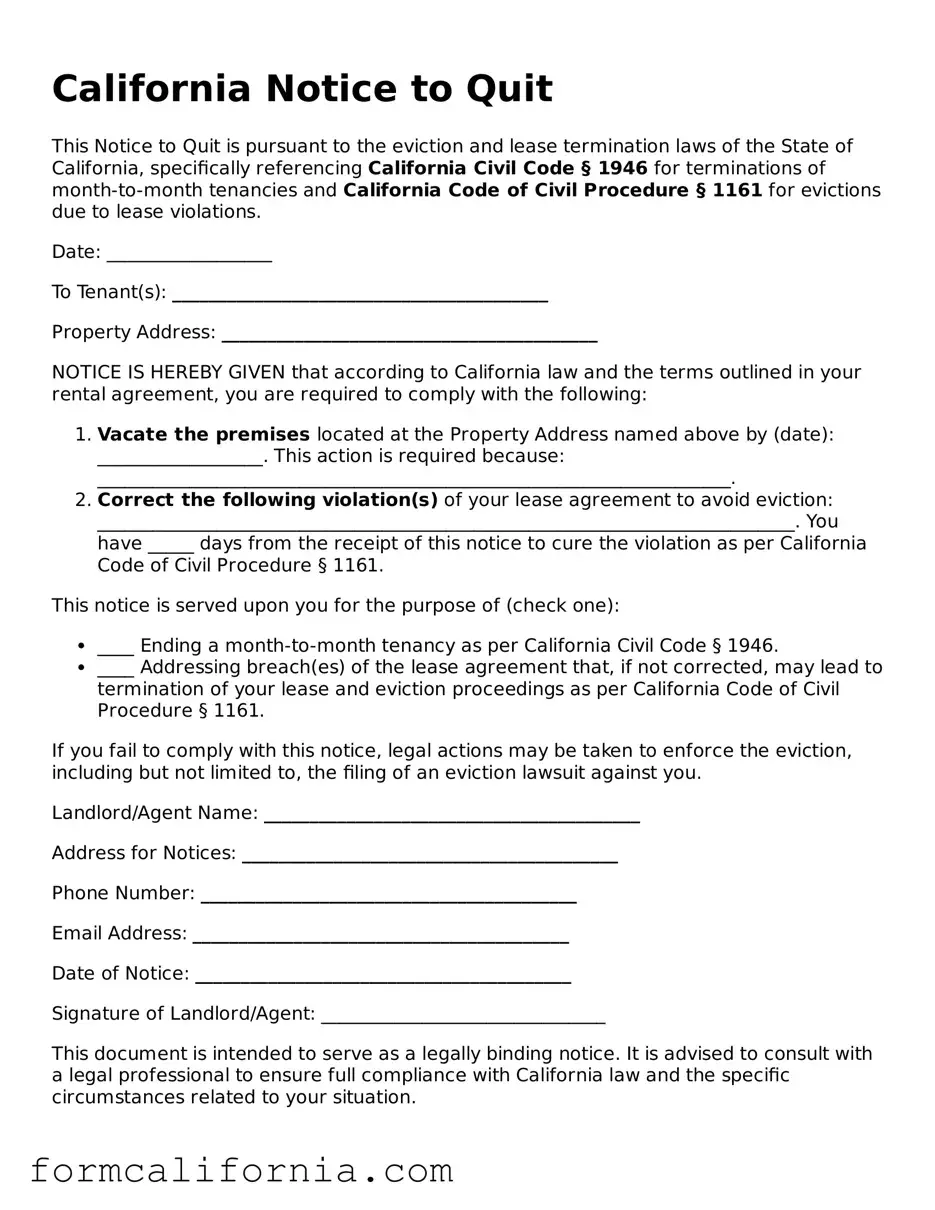California Notice to Quit
This Notice to Quit is pursuant to the eviction and lease termination laws of the State of California, specifically referencing California Civil Code § 1946 for terminations of month-to-month tenancies and California Code of Civil Procedure § 1161 for evictions due to lease violations.
Date: __________________
To Tenant(s): _________________________________________
Property Address: _________________________________________
NOTICE IS HEREBY GIVEN that according to California law and the terms outlined in your rental agreement, you are required to comply with the following:
- Vacate the premises located at the Property Address named above by (date): __________________. This action is required because: _____________________________________________________________________.
- Correct the following violation(s) of your lease agreement to avoid eviction: ____________________________________________________________________________. You have _____ days from the receipt of this notice to cure the violation as per California Code of Civil Procedure § 1161.
This notice is served upon you for the purpose of (check one):
- ____ Ending a month-to-month tenancy as per California Civil Code § 1946.
- ____ Addressing breach(es) of the lease agreement that, if not corrected, may lead to termination of your lease and eviction proceedings as per California Code of Civil Procedure § 1161.
If you fail to comply with this notice, legal actions may be taken to enforce the eviction, including but not limited to, the filing of an eviction lawsuit against you.
Landlord/Agent Name: _________________________________________
Address for Notices: _________________________________________
Phone Number: _________________________________________
Email Address: _________________________________________
Date of Notice: _________________________________________
Signature of Landlord/Agent: _______________________________
This document is intended to serve as a legally binding notice. It is advised to consult with a legal professional to ensure full compliance with California law and the specific circumstances related to your situation.
